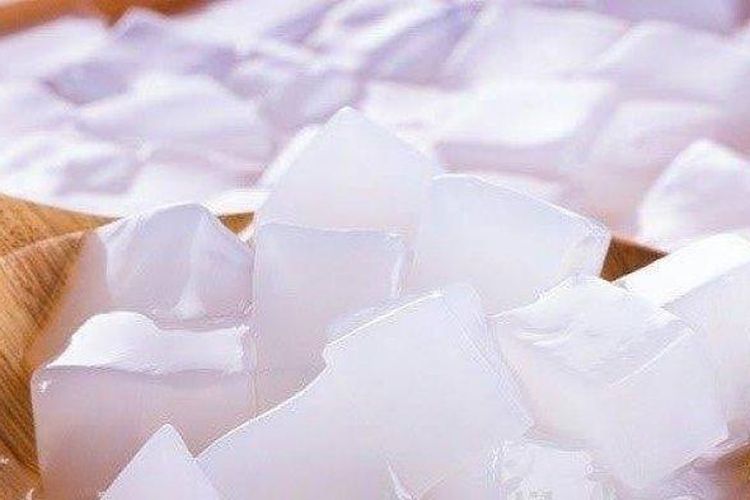
News
2023 Ultimate Guide Benefits of Nata De Coco for Health

Nata de coco is a popular dessert ingredient that originated in the Philippines. It is a chewy, translucent, and jelly-like substance made from coconut water. In recent years, nata de coco has gained popularity due to its numerous health benefits. In this article, we will explore the benefits of nata de coco for health, its nutrition benefits, and whether it is a healthy food option.
Who can benefit from Nata De Coco?

Nata de coco is suitable for individuals of all ages, including children and older adults. It is a low-calorie food option that is rich in fiber, making it an excellent choice for individuals who are trying to maintain a healthy weight. Additionally, nata de coco is gluten-free, making it a suitable option for individuals with celiac disease or gluten intolerance.
Benefits of Nata De Coco for Health:
- Rich in Nutrients: Nata de coco is rich in nutrients such as fiber, potassium, calcium, and iron. These nutrients are essential for maintaining good health, and their intake can help prevent various diseases.
- Aids in Digestion: Nata de coco is a rich source of dietary fiber, which aids in digestion. Fiber adds bulk to the stool and helps prevent constipation.
- Lowers Cholesterol Levels: Nata de coco contains a type of fiber called pectin, which can lower cholesterol levels. Pectin binds to cholesterol in the digestive tract and prevents its absorption into the bloodstream.
- Boosts Immune System: Nata de coco contains antioxidants, which can help boost the immune system. These antioxidants protect the cells from damage caused by free radicals.
- Promotes Skin Health: Nata de coco contains amino acids, which are essential for maintaining healthy skin. Amino acids help repair damaged skin cells and promote the growth of new cells.
List of Benefits:
- Rich in Nutrients
- Aids in Digestion
- Lowers Cholesterol Levels
- Boosts Immune System
- Promotes Skin Health
What is Nata De Coco?
Nata de coco is a chewy, translucent, and jelly-like substance that is made from coconut water. It is a popular dessert ingredient in Southeast Asian countries. The process of making nata de coco involves fermenting coconut water with Acetobacter xylinum, a type of bacteria that produces cellulose.
Nutrition Benefits of Nata De Coco:
- Low in Calories: Nata de coco is a low-calorie food option, making it an excellent choice for individuals who are trying to maintain a healthy weight.
- Rich in Fiber: Nata de coco is high in fiber, which aids in digestion and helps prevent constipation.
- Low in Fat: Nata de coco is low in fat, making it a suitable option for individuals who are trying to reduce their fat intake.
- Low in Sugar: Nata de coco is low in sugar, making it a suitable option for individuals who are trying to reduce their sugar intake.
- Contains Vitamins and Minerals: Nata de coco contains essential vitamins and minerals such as potassium, calcium, and iron.
List of Nutrition Benefits:
- Low in Calories
- Rich in Fiber
- Low in Fat
- Low in Sugar
- Contains Vitamins and Minerals
When to Consume Nata De Coco
Nata de coco can be consumed at any time of the day, either as a snack or as an ingredient in desserts. It is a versatile food option that can be used to make a variety of dishes such as fruit salads, ice cream, and cocktails.
How to Consume Nata De Coco:
- As a Snack: Nata de coco can be eaten as a snack on its own. It has a chewy and refreshing texture that makes it a popular snack option.
- In Salads: Nata de coco can be used as an ingredient in salads. It adds a unique texture and flavor to the salad.
- In Desserts: Nata de coco is a popular ingredient in desserts such as ice cream, jelly, and pudding. It adds a chewy and refreshing texture to these desserts.
List of How to Consume Nata De Coco:
- As a Snack
- In Salads
- In Desserts
Pros and Cons of Consuming Nata De Coco
Pros:
- Low in Calories: Nata de coco is a low-calorie food option, making it an excellent choice for individuals who are trying to maintain a healthy weight.
- Rich in Fiber: Nata de coco is high in fiber, which aids in digestion and helps prevent constipation.
- Contains Essential Nutrients: Nata de coco contains essential nutrients such as potassium, calcium, and iron.
Cons:
- High in Sodium: Some brands of nata de coco can be high in sodium, which can be harmful to individuals who have high blood pressure.
- Processed Food:2. Processed Food: Nata de coco is a processed food that contains additives such as preservatives and food coloring.
- Potential Allergen: Nata de coco is made from coconut water, which can be an allergen for some individuals.
List of Pros and Cons: Pros:
- Low in Calories
- Rich in Fiber
- Contains Essential Nutrients
Cons:
- High in Sodium
- Processed Food
- Potential Allergen
Alternatives to Nata De Coco
If you are looking for alternatives to nata de coco, there are several options to consider. Some of the alternatives include:
- Chia Seeds: Chia seeds are a rich source of fiber and can be used as an alternative to nata de coco in salads and desserts.
- Fresh Fruits: Fresh fruits such as watermelon, grapes, and strawberries can be used as an alternative to nata de coco in fruit salads.
- Gelatin: Gelatin can be used as an alternative to nata de coco in desserts such as jelly and pudding.
List of Alternatives to Nata De Coco:
- Chia Seeds
- Fresh Fruits
- Gelatin
Step-by-Step Guide to Making Nata De Coco
If you are interested in making nata de coco at home, follow these steps:
- Sterilize a container and utensils by boiling them in water for 10 minutes.
- Mix coconut water, sugar, and vinegar in a container.
- Add Acetobacter xylinum to the mixture and stir.
- Cover the container with a cheesecloth and let it ferment for 10-14 days.
- Once the mixture has thickened, remove the nata de coco from the container and rinse it with water.
- Cut the nata de coco into small pieces and store in a container with syrup.
List of Steps to Make Nata De Coco:
- Sterilize container and utensils
- Mix coconut water, sugar, and vinegar
- Add Acetobacter xylinum
- Cover and ferment
- Remove and rinse nata de coco
- Store in container with syrup
Comparison of Nata De Coco and Coconut Water
Nata de coco and coconut water are both derived from coconuts, but they have different nutritional profiles. Here is a comparison of nata de coco and coconut water:
- Nutritional Value: Coconut water is a rich source of potassium and other electrolytes, while nata de coco is a rich source of fiber.
- Caloric Value: Coconut water is lower in calories than nata de coco.
- Texture: Coconut water is a liquid, while nata de coco is chewy and jelly-like.
List of Comparison of Nata De Coco and Coconut Water:
- Nutritional Value
- Caloric Value
- Texture
Tips for Consuming Nata De Coco
If you are interested in consuming nata de coco, here are some tips to keep in mind:
- Read Labels: Read the labels of nata de coco products to ensure that they do not contain excessive amounts of sodium or added sugars.
- Moderation: Consume nata de coco in moderation as it is a processed food.
- Pair with Fruits: Pair nata de coco with fresh fruits to make a healthy and nutritious snack or dessert.
List of Tips for Consuming Nata De Coco:
- Read Labels
- Moderation
- Pair with Fruits
The Best Nata De Coco Products
If you are looking for the best nata de coco products, here are some options to consider:
- Coco Royal Nata De Coco: This product is made from high-quality coconut water and has a chewy and refreshing texture.
- Philippine Brand Nata De Coco: This product is made from fresh and natural ingredients and is available in a variety of flavors.
- Century Pacific Food Inc. Nata De Coco: This product is made from 100% natural ingredients and is available in a variety of sizes.
List of the Best Nata De Coco Products:
- Coco Royal Nata De Coco
- Philippine Brand Nata De Coco
- Century Pacific Food Inc. Nata De Coco
FAQs
- Is nata de coco a healthy food option? Yes, nata de coco is a healthy food option as it is low in calories, rich in fiber, and contains essential nutrients.
- Can nata de coco help with digestion? Yes, nata de coco can help with digestion as it is a rich source of dietary fiber.
- Is nata de coco suitable for individuals with celiac disease? Yes, nata de coco is gluten-free and is suitable for individuals with celiac disease or gluten intolerance.
- Can nata de coco be consumed by individuals with high blood pressure? Individuals with high blood pressure should consume nata de coco in moderation as some brands may be high in sodium.
- How can I incorporate nata de coco into my diet? Nata de coco can be consumed as a snack, in salads, or as an ingredient in desserts such as ice cream, jelly, and pudding.
Conclusion
In conclusion, nata de coco is a healthy and nutritious food option that is rich in fiber, low in calories, and contains essential nutrients such as potassium, calcium, and iron. It has numerous health benefits, including aiding in digestion, lowering cholesterol levels, boosting the immune system, and promoting skin health. However, it is important to consume nata de coco in moderation and to read the labels of products to ensure that they do not contain excessive amounts of sodium or added sugars. With its unique texture and refreshing taste, nata de coco is a great addition to any diet.




